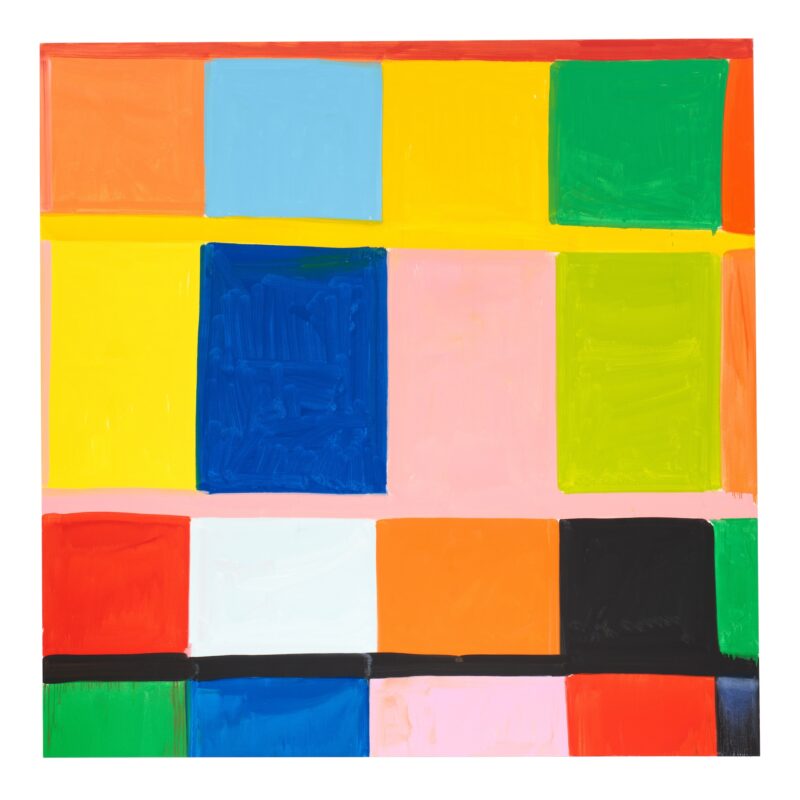In all of my dimensional work I use the third dimension to intensify the two-dimensional experience. It becomes part of a vivid two-dimensional image. The third dimension, while actually existing, is only an illusion in terms of the painting, which remains by intent in a painting and not a sculptural context.
—Slim Stealingworth (a pseudonym for Tom Wesselmann)

“Tom Wesselmann: Standing Still Lifes,” an exhibition of nine monumental works made between 1967 and 1981. This is the first time that the complete series will be shown together. Each large-scale work comprises multiple canvases, both hanging and standing, shaped according to the outline of the commonplace objects that they depict. Wesselmann’s spatial and pictorial innovation in the Standing Still Life paintings have precedents in his early work. His drawings of his wife and lifelong muse, Claire Selley—beginning in the 1950s when they met as students at Cooper Union—often took the form of hybrid collages that incorporated sketches and scraps of wallpaper and advertisements that he found in the New York City subway. Similarly, his early assemblage paintings, which included functioning objects and gadgets, present shifting images that advance and retreat depending on the viewer’s relative position, like stage sets that can be seen but not entered.
Wesselmann’s inquiries into the material qualities of painting evolved, and in 1972 he exhibited a Standing Still Life for the first time at the Sidney Janis Gallery in New York, along with a selection of smaller works from his Bedroom Paintings series. The still lifes imply narratives: in Still Life #60 (1973), a huge six-part work measuring almost thirty feet in width, the objects, which appear to be the contents of a woman’s purse, suggest a human presence; a visitor who has placed her belongings on a bedside table. In a sense, the still life has become a stand-in for the nude, or the intimate portrait of the beloved subject, Claire, absent from the image itself. In his graphic compositions, Wesselmann achieved the precise formal and chromatic arrangement by shifting panels until the composition “locked into place.” In the mode of New York Pop art, which Wesselmann played an integral role in shaping, some of these motifs are specific to their moment, such as the framed portrait of the actress Mary Tyler Moore, while others recur throughout Wesselmann’s oeuvre, from the round orange to the vase of flowers and the radio.
TOM WESSELMANN STANDING STILL LIFES Opening reception: Thursday, January 18, 6–8PM January 18–February 24, 2018 555 West 24th Street New York, NY 10011 www.gagosian.com
About The Artist
Tom Wesselmann was born in Cincinnati in 1931, and died in New York in 2004. Collections include Tate, London; Museum fu?r Moderne Kunst (MMK), Frankfurt am Main; Hamburger Kunsthalle, Germany; Museum Ludwig, Cologne; Albertina, Vienna; Museu Berardo, Lisbon; Museo Thyssen-Bornemisza, Madrid; Museum of Modern Art, New York; Albright-Knox Art Gallery, Buffalo, NY; Museum of Contemporary Art, Los Angeles; Museum of Contemporary Art North Miami, FL; Hirshhorn Museum and Sculpture Garden, Washington, DC; High Museum of Art, Atlanta, GA; Israel Museum, Jerusalem; and Hara Museum of Contemporary Art, Tokyo. Recent institutional exhibitions include Museo d’Arte Contemporanea di Roma (2005); “Tom Wesselmann DRAWS,” The Kreeger Museum, Washington, DC (2011); and “Beyond Pop Art: A Tom Wesselmann Retrospective,” Montreal Museum of Fine Arts, Quebe(2012, traveled to Virginia Museum of Fine Arts, Richmond, VA; Denver Art Museum, CO; and Cincinnati Art Museum, OH, through 2015).








